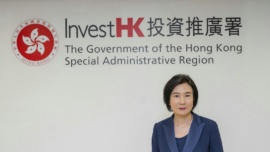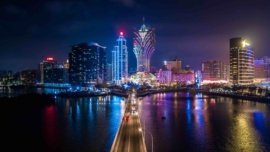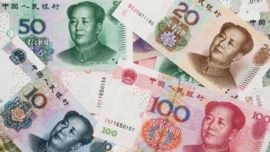In the 1980s, Macau’s manufacturing sector sought to diversify under new exogeneous factors. Over-concentration on textiles and garments proved dangerous as Macau was soon suff ered restraining measures by its major overseas markets. The latest round (1982) of such restraining agreements straight-jacketed the annual growth of textile products to no more than 6%. ‘Another wave of growth due to the transfer of industrial capacity from Hong Kong has occurred since 1979, when industrialists there found that their advantages in a range of exports of manufactured goods (e.g.) toys and artifi cial fl owers, under the GPS were being reduced or withdrawn (for toys the withdrawal came in 1981). ‘Having learned from previous experience of the textiles and garments quota restrictions, many industrialists closed their production facilities in Hong Kong and re-installed them in Macau where the GPS advantage for these products still existed. These newly arrived export sectors in Macau – comprising toys, artifi cial fl owers, electronics and leather articles – made up 31% of total exports in 1985, a sharp rise from Macau’s less than 1% in 1977,’ writes Victor F. S. Sit. he fi rst toy factory appeared in Macau in the 1960’s but during this decade and part of the 70’s this industry ‘was of a relatively unsophisticated level. In the second half of the 70’s the settlement of new factories accelerated, but only after 1980, when the need was felt for diversifi cation of the industrial structure of Macau, [did] the toy sector begin to develop.’According to an older publication from the Economic Services, between 1980 and 1982 some 31 new industrial units were established, producing not only traditional toys but also electronic toys and die-cast toys, ‘due to the evolution of demand in the major international markets’. Despite this huge growth, the value sector in 1980 only amounted to MOP26 million – 1 per cent of total Macau exports.By continuing to grow meaningfully, in 1984 plastic (with toys as the main product) formed the second largest industry, if we combine textiles and garments in the fi rst place. In the middle of the decade, it accounted for 8.5 per cent of employment, 7.7 per cent of gross output, and 9.4 per cent of value-added in manufacturing.In 1988 there were 59 fabrics companies, employing 7,000 workers, producing MOP 1.100 million-worth of exports (10 per cent of the total exports in that year) – it was the high point . . . and the swan song. Two years later, the government was already speaking of a sector urgently in need of promoting technology, following the closure of several factories.The opening of many units in Zhuhai and Shenzhen, in many cases by the same owners of Macau factories, spelled the end of the toy industry during the 90’s. For example, exports that came to represent 12 per cent of total exports in 1992-93 saw their share fall to less than 5 per cent. Even famous names like Matchbox and Harbour Ring (the largest toy factory in the 1990s) shut up shop.While the Industrial Association of Macau still lists fi ve factories in Macau between their members (Kam Long Industrial Co. Ltd., Sin Nung Toys Factory, Ho Tin Industries Ltd., Perfekta Toys Ltd. and Wing Tat Plastic Toys Factory) the Economic Services told Macau Business that only one toy factory is now operating in Macau. No names, however..
—























